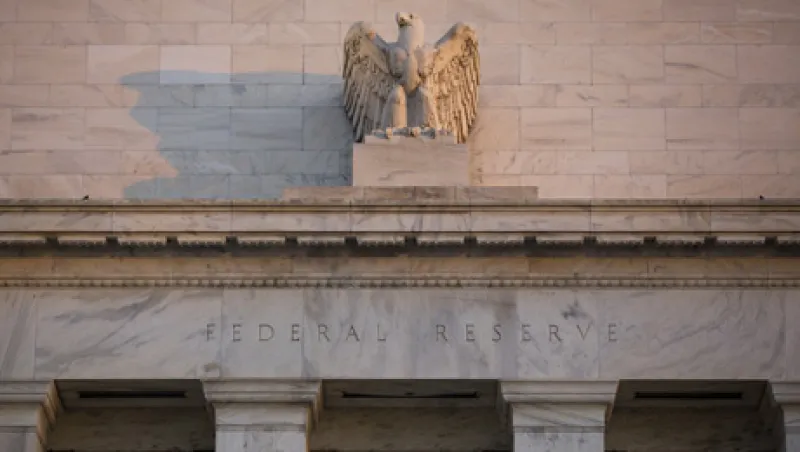Although the U.S. historically has lectured emerging-markets policymakers, it might be time for the U.S. to be the student. Comparing the policy responses of Asian governments to their financial crisis in the late 1990s with the U.S.’s response to its financial crisis generates a stark contrast.
The causes of the Asian crisis included overvalued and pegged exchange rates and unsustainable capital inflows into Asian government and corporate debt. Crony capitalism exacerbated these misallocations. The U.S. crisis also was caused by policy-inspired misallocations of capital, as well as financial institution leverage.
The Asian policy response epitomized the so-called Washington consensus. Central banks were required to hike interest rates to retain and attract capital inflows, despite devastating recessions. Currency devaluations were eventually needed to protect reserves and improve external balances (through reduced imports, increased exports and increased capital inflows). Fiscal deficits were adjusted dramatically downward. And insolvent financial and corporate institutions were allowed or forced to default. There were even political responses — Thailand’s prime minister and Indonesia’s president lost their positions. Bear in mind that these painful policy choices were made despite 20 to 40 percent declines in dollar-based GDP and stock market collapses of about 50 percent.
The policies worked. Asia’s financial systems (with the possible exception of China’s) are healthier, national balance sheets are much stronger, most of the region’s economies are net creditors to the U.S., and growth is a multiple of that of so-called developed-markets economies. In fact, the fiscal and monetary “space” that was created allowed these economies to implement fiscal and monetary stimulus when the U.S. crisis rolled around.
Despite being the source of the Washington consensus, U.S. authorities implemented completely opposite policies when the 2008 crisis hit. The Federal Reserve reduced interest rates and embarked on experimental balance-sheet expansions, which are ongoing. Bank debt was guaranteed. Worse, off-balance-sheet derivative liabilities of banks were guaranteed in secret, with the Fed lending $16 trillion to prevent a run on derivatives. Fiscal deficits were expanded.
Though one could perhaps justify such behavior if it were conditioned on the fiscal authority getting its act together — “We’ll give you the liquidity, but you have to address your solvency by controlling your budget and the banks” — there was nothing of the sort. The central bank is, in fact, rewarding political authorities by lending at suppressed interest rates indefinitely and indirectly creating too-big-to-fail banks. Perhaps most worrisome, there has been virtually no political fallout (excepting the now seemingly coopted Tea Party and Occupy movements).
Put yourself in the shoes of an emerging-markets central bank reserve manager who has to decide which countries’ bond markets should make up the bank’s reserves. Is it any wonder that gold has become an obvious reserve asset or that Canada, Mexico, Norway, Russia, South Korea and other countries are seeing their bonds make up a growing part of global central bank reserves?
I should note that although I have only mentioned the Asian crisis, there were similar policy responses to crises in Eastern Europe, Northern Europe and Latin America. If one listens to authorities in “hard-money” countries such as Germany and the Netherlands, this divergence in crisis responses puts the U.S. in a potentially isolated position.
Which countries’ bonds might eventually find their way into the reserve assets of central banks looking for policy mixes closer to their own? Mexico, Russia and Nigeria immediately come to mind. Mexico has one of the more technocratic and independent central banks in the world. Interest rates are high in real terms, inflation is anchored, and the political authorities are responding by implementing consistently low fiscal deficits and inaugurating a new reform program. Russia’s and Nigeria’s central banks are not as orthodox, but they too are increasingly focused solely on inflation.
The bottom line is that foreign central banks are not just purchasing gold. They are also buying the bonds of countries that share their policy frameworks. Notice that many of these bonds are issued by countries with external surpluses based on commodity exports. In a sense, a central bank is getting a yield backed by commodities that its country will need in the future. Similarly, for U.S. investors, if the dollar is not as likely to have the same purchasing power as it does now to buy a barrel of oil in the future, shouldn’t some portion of their wealth be in bonds from countries with strong policy mixes, backed by commodities for which future demand seems fairly certain?
Eric Fine is a managing director with Van Eck Global in New York and portfolio manager of the Van Eck Unconstrained Emerging Markets Bond Fund.






